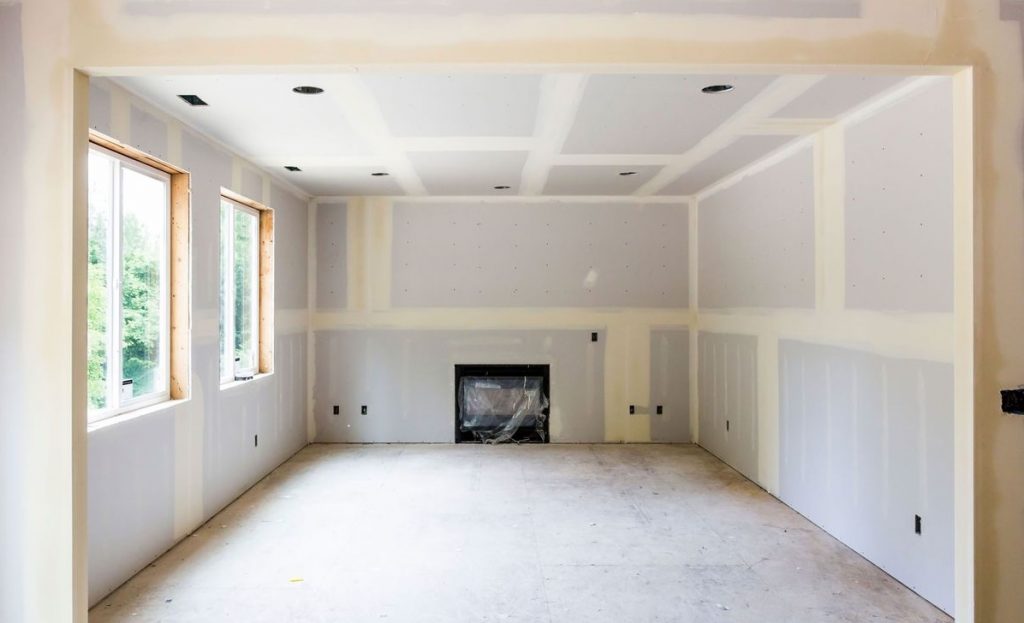Majority of houses that were built in the last 5 decades have walls and ceilings made of drywall. This is an innovative material that was developed to replace traditional wall plaster that is applied by hand during construction. Drywall is affordable hence ideal for Do It Yourself (DIY) home improvement projects. Drywall can be fixed to wall frames conveniently using screws in contrast to traditional plaster that depends on adhesion. These features make it highly favorable for use today. You can utilize drywall in your basement and we have outlined how much it costs below.
How Much it Costs to Drywall a Basement
The minimum cost of drywalling a 1,000 square foot basement is $5,000. At this price point, standard drywall is installed according to industry regulations. In addition to that, there’s no addition of special materials or execution of unique installation practices.
On the other hand, drywalling a basement of the same size can cost up to $10,500. At this higher price, you can outfit the ceiling and walls with special moisture-resistant drywall panels such as green board or soundproof blue board. Evidently, special types of drywall are more expensive than regular ones.
You may also like –
You may want to add a touch of style to your basement after drywalling for example brushed aluminum skirting, ambient LED light fixtures or 3D wallpaper. In such a project, the overall cost ranges from $6,500 to $18,500.
The Cost of Replacing other Materials with Drywall
Wood

If you have wood panels in the walls of your basement, you can remove and replace them with drywall. In such a case, the project would cost you from $2 to $4.50 per square foot. Thick wood panels will take longer time to replace than thin ones. As such, the cost of replacement rises according to the time used to complete the process.
Plaster
You can replace plaster with drywall in any room within your house at a cost of between $1.60 and $3.80 per square foot. Demolition attracts a cost of $0.50 to $0.80 per square-foot. On the other hand, disposal costs $0.10 to $0.20 per square foot.
On average, standard panels of drywall range in price from $0.40 to $0.65 per square foot. The regular drywall panels found in your local home depot fall within this price range. Tthere are other more high-tech types of drywall that contain features such as soundproofing, moisture resistance or waterproof ability. These varieties are more expensive and cost up to $90 per panel. Conclusively, standard drywall panels cost from $12 to $35 per panel. Furthermore, they are available in sizes such as 4′ x 8′ and 4′ x 16′.
History of Drywall
Originally, drywall was referred to as Sackett Board to commemorate its creator, Augustine Sackett. He patented it in 1894 to save the time and labor that is used up when working with traditional plaster. The US Gypsum Company (USG) bought Augustine’s invention in 1909 and commenced mass production. Today, USG is the biggest producer of drywall in North America.
Drywall reached the peak of popularity in the 1950s after World War II. The economic recovery resulted in a building boom. Drywall was affordable and its flat, white appearance was attractive to residential home owners of the time. To date, drywall is used for walls and ceilings in 96% of homes in the USA.
Types of Drywall
There are 7 main types of drywall available today and they include:
White Board or Regular Drywall:
White board is the most popular type of drywall because it is affordable and available in many sizes. Also referred to as regular drywall, it is white and brown in color. You can get it in sizes that range from 3/8″ to 1″ thick. Furthermore, it is available in panels measuring 4 x 8 feet.
Green Board Drywall:
A green, moisture-resistant cover makes this type of drywall unique upon first sight. Green board drywall is used in areas that have high humidity because it resists the formation of moisture resulting in dry ceilings and walls. By doing so, green board drywall prevents the growth of fungi or mold.
Blue Board Drywall:
Commonly installed in bathrooms, blue board drywall has a high resistance to mold and water. It is applied in veneer plastering is great for locations where there’s lots of moisture. Blue board drywall also reduces noise significantly.
Paperless Drywall:
Traditionally, drywall is covered with paper for a smooth finish. Unfortunately, paper can get moist and attract mold or mildew. Paperless drywall prevents this problem by replacing the paper with Fiberglass. The resultant drywall is tougher, more durable and easier to cut due to this combination of materials.
Purple Drywall:
When you desire maximum resistance to mold and moisture, purple drywall fits the bill. It is versatile and can be utilized in walls and ceilings. If a wall will be in contact with water, purple drywall is the solution you need!
Type X Drywall:
Type X drywall is resistant to flames and is used to construct buildings in dry, fire hazard areas. It is also used in high rise apartments, laboratories and garages. Type X drywall is made using noncombustible fibers and is available with a thickness of 5/8″. You can use multiple layers of Type X drywall to improve fire resistance in your building.
Soundproof Drywall:
If you want to prevent noise escaping from a room such as a music studio, your best bet is soundproof drywall. It is essentially laminated drywall composed of gypsum, wooden fibers and polymers. Together, these materials increase the Sound Transmission Class (STC) of the drywall.
Overall
Drywall makes it very easy to build walls and ceilings in your home. As such, it can be implemented in your basement. Drywalling a basement costs between $5,000 and $10,500. You can expect this cost to rise if you apply special materials or unique construction strategies. Drywall is easy on your pocket, durable and flexible resulting in a rapid, fulfilling home improvement experience!

